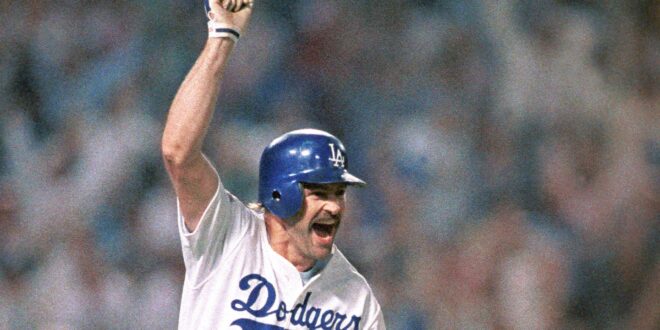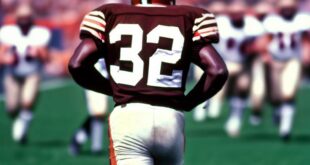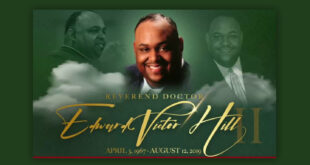By Rick Weinberg — Special to ESPN.com — See Video below!
He could barely walk. Actually, he could barely stand without his leg wobbling and shaking. When no one was looking, back when he was in the batting cage outside the Los Angeles Dodgers’ locker room during Game 1 of the 1988 World Series against the Oakland A’s, he actually used a bat a few times as a walking cane, to balance himself.
His knee, his hamstring, his ankle, his whole damn leg, for goodness sakes, ached. But he was still in uniform and on the bench for the start of the World Series — no way Kirk Gibson was going to miss this. This was his team, after all. He had signed as a free agent over the winter and declared that the Dodgers were going to win it all, that he was going to guide them to a championship, just as he did for the Detroit Tigers in 1984, when he led them to a World Series victory — and capped it all over with a towering eighth-inning, three-run jack off Goose Gossage to turn a tense Game 5 into a rout and deliver the Tigers’ first world championship since 1968.
Gibson had transformed the Dodgers into workmanlike, lunch pail-carrying winners with his leadership, grit, hustle, aggressiveness and attitude, leading them to the National League West Division title and then the N.L. pennant with a seven-game victory over the New York Mets. He was later named the N.L.’s Most Valuable Player.
It was during the N.L. Championship Series against the Mets that Gibson’s MVP season came to a screeching halt, when a season’s worth of poundings took their toll and knocked him from the lineup. His leg was so badly damaged that when the Dodgers won Game 7 of the NLCS, manager Tom Lasorda refused to let Gibson run to the mound for the celebration after the final out, fearing he’d injury his leg further.
As the World Series began in L.A. a few days later, the prospect of Gibson playing at all in the Series against the American League champion Oakland A’s, was doubtful, let alone Game 1. When Gibson awoke that morning, he attempted to walk on his gimpy leg. He could barely stand up straight. The pain was unbearable, even for an athlete with a pain threshold as high as Gibson’s. He knew he couldn’t walk, let alone run, but perhaps he could swing a bat, at least giving himself the option of being able to pinch hit in a tight, late-inning spot. He took some swings in his living room. Realizing he couldn’t even do that, he tossed his bat aside angrily.
THE MOMENT
Oct. 15, 1988, Game 1 of the World Series, Dodger Stadium.
Gibson is one of the first players to arrive at the stadium. He is transported from the player’s parking lot to the dugout in a cart. He limps into the dugout and toward the trainer’s room, where he is given injections of cortisone and xylocaine for the sprained ligament in his right knee. His leg is so bad that during the pregame festivities and player introductions, he can’t even make it out to the field.
As the game begins, Gibson cannot bear not to be a part of it, so he drags himself down the dugout runway and begins swinging a bat. Adrenaline starts rushing through his body. He walks into the batting cage and hits a ball off a tee, then another, then another. His leg aches, but his adrenaline, his competitive spirit, his unflagging desire, offsets the pain.
Gibson’s replacement, Mickey Hatcher, slams a home run in the bottom of the first inning, only his second homer of the entire season, and he sprints around the bases as if he is leading a Lakers’ fastbreak. Elated that his replacement is the one to deliver a home run, Gibson smiles.
As the game progresses, Gibson walks back and forth, from the trainer’s room to the runway to the dugout, then back to the trainer’s room and clubhouse. As the Dodgers take the field in the top of the ninth inning, trailing 4-3, Gibson slips back into the trainer’s room and onto the trainer’s table.
“Well, the man who’s been there for the Dodgers all season, Kirk Gibson, is not in the dugout and will not be here for them tonight,” broadcaster Vin Scully tells a worldwide audience. Angry, Gibson slides off the trainer’s table and shouts back at the speaker from which he heard Scully’s voice, “Bull, I’ll be there.” He grabs an ice bag and straps it to his right knee in order to numb it. Then he pulls on his spikes and limps down the runway.
He tells clubhouse man Mitch Pool to inform hitting coach Ben Hines and Lasorda that he’s going to get himself ready to pinch hit in the bottom of the ninth. Gibson knows the exact lineup situation: if anyone gets on base, pitcher Alejandro Pena is due up fourth. That’s exactly where Gibson intends to hit.
To test his knee, Gibson hits some balls off a tee, slamming one after another into the net. His knee is numb. He feels good, confident, strong. He feels he can give the Dodgers one good swing. He hobbles back down the runway. When he gets to the dugout, Hines nudges Lasorda, who turns to see Gibson at the end of the dugout. Gibson motions to Lasorda, who walks toward Gibson. “If you want to hit [Mike] Davis for [Alfredo] Griffin, I’ll be next in line,” Gibson says.
The A’s are retired in the top of the ninth, and as the Dodgers race off the field, out of the A’s bullpen emerges Dennis Eckerlsey, baseball’s best closer, who led the majors with 45 saves. This save looks like it’ll be one of his easiest of the season since he is scheduled to face the bottom of the Dodgers order — catcher Mike Scioscia, third baseman Jeff Hamilton and shortstop Alfredo Griffin.
As Gibson stands at the end of the dugout, his helmet pulled down over his eyes, up steps Scioscia. Eckersley gets him easily on an infield pop-up for the first out. As Eckersley strikes out Hamilton for the second out, Gibson angrily removes his helmet and turns his back to the field.
Down to the last out, Lasorda calls on Davis to bat for Griffin. Davis had played most of his career with the A’s. After a stellar 1987 season, he became a free agent and was one of the Dodgers’ key free-agent signings, along with Gibson. But Davis fell into an early-season slump and was never able to climb out of it. He was a horrendous bust, hitting just .196 during the season and .166 as a pinch hitter.
But if Davis is able to find his way on base, Gibson will hit next. As a decoy, Lasorda sends light-hitting shortstop Dave Anderson into the on-deck circle instead of Gibson. “I figured Eckersley would pitch more carefully to Davis with the right-hander on deck,” Lasorda would reveal later. “If he’d seen Gibson on deck, he would have pitched Davis differently.”
There is nothing in the world Davis wants to do more than to hit a game-tying homer off Eckersley, a hit that would salvage his atrocious season. But Davis does exactly what Lasorda tells him — disrupt Eckersley’s timing by stepping out of the box.
Davis immediately gets ahead in the count, prompting Hatcher to say to teammate Tracy Woodson, “Watch what happens if Davis gets on . . . Gibby’s going to bat.”
When Davis steps back out of the box again, Eckersley is seething. “The guy’s hitting a buck ninety — what the hell’s he doing calling time?” Eckersley would say later.
Davis accomplishes his purpose: infuriating Eck and coaxing a walk from a pitcher who had allowed only nine unintentional walks all season. “That was terrible,” Eckersley would say later to the media, referring to falling behind Davis 3 and 1 and then walking him on a 3-2 pitch. “A two-out walk to any hitter is inexcusable, and I don’t do it very often. I tried to go right at him, but everything sailed outside. He was stepping in and out of the box a lot, disrupting my rhythm.”
As Davis heads to first base, Anderson quickly turns around, slips back into the dugout and out steps Gibson. The stadium of over 56,000 people explodes in delirious joy as Scully announces, “And here comes Gibson!”
Dodger players stand agape in the dugout as Gibson hobbles to the plate. The enormous, deafening ovation takes Gibson’s mind off his pain and immobility. “The fans really pumped me up,” he would tell the media afterwards. “I didn’t even think about the pain. I was just trying to visualize hitting.”
With his adrenaline flowing, the left-handed hitting Gibson digs in. The right-handed Eckersley, with his funky, side-winding delivery, plans his approach. “I’ll feed him fastballs, away,” he says to himself.
The hamstring strain in Gibson’s left leg and the sprained ligament in his right knee prevent him from being able to plant his legs and turn quickly enough. Even if he finds a way to get his bat on the ball, it would likely be an off-balance, awkward swing that would likely result in a weak, opposite-field fly ball.
With the crowd on its feet, Eckersley fires a fastball. Gibson takes a strong cut and fouls it off. Eckersley fires another fastball and Gibson fouls that one off too. Gibson steps out of the box, slams his right hand on helmet and gets back into the box, determined to keep the inning alive. The next offering is a hard sinker. Taking an ugly off-balance cut, Gibson hits a little slow roller up the first base line that barely rolls foul. Running down the line, Gibson looks like he has two wooden legs.
Eckersley comes back with a sweeping slider that usually comes back and catches the outside corner for strike three on lefties. But this one tails away, slightly, for ball one. “That was the key pitch because I was able to stay back and lay off it,” Gibson would tell the media after on. “And it just missed the strike zone.”
Gibson fouls back the next pitch in this amazing duel between two of baseball’s marquee players. “The ultimate competitors,” Lasorda would say. Gibson steps out of the box again and takes a deep breath as the crowd roars around him. He feels good, confident, excited. “I live for these moments,” he would tell the media afterwards. “I’m an impact player, and I love the added pressure of admitting it.”
The next pitch is another fastball, and Gibson lets it go as it sails in wide of the plate for ball two. It’s now 2-2. As Eckersley throws his next offering, Davis takes off for second base. The pitch, a backdoor slider, just misses the outside corner for ball three. A’s catcher Ron Hassey doesn’t bother to throw the ball down to second base in an attempt to nail Davis for the potential final out of the game.
“Mike’s stolen base was huge because all I had to think about was shortening my swing and trying to get a hit to score him,” Gibson would say.
With first base open, A’s manager Tony La Russa doesn’t consider walking Gibson. Never put the winning run on base, he says to himself. And why even consider it with his ace closer on the mound, one pitch away from closing out a 4-3 victory?
Gibson steps out of the box again. The drama is thick. As he taps his helmet, he thinks back to what Dodgers scout Mel Didier said in his scouting report on Eckersley before the Series: At 3-and-2 against Eckersley, “look for the backdoor slider.”
Gibson limps back into the box. Dodger Stadium is tense. All the fans are up on their feet. Players and coaches in both dugouts stand. Hassey crouches. He gives Eckersley the sign: backdoor slider.
“We had been throwing him all those fastballs, and I felt we could freeze him with the breaking ball,” Hassey would tell the media afterwards. Hassey admits afterwards that he didn’t consider altering his pitch selection because of Gibson’s battered physical condition. But the fact is, Gibson is unable to catch up with Eckersley’s fastball. Eckersley doesn’t shake off Hassey’s call for the backdoor slider. “I figured I’d just throw the nastiest slider I had,” Eckersley would say.
The stadium is frozen as Eckersley wheels around and throws. As the pitch travels toward the plate, Gibson readies himself. The pitch hangs out over the outside of the plate. Using nothing but his wrists, Gibson reaches out over the plate, takes a quick cut and connects.
The ball explodes off his bat and sails through the night sky. As right fielder Jose Canseco races back, the ball keeps carrying . . . it sails over the fence and into the bleachers. As the ball disappears, the stadium explodes in celebration over the miraculous 5-4 victory, and Gibson begins his slow march around the bases. As he heads toward first base, he raises his arm and holds it aloft. He hobbles around the bases, limping heavily.
The freeze-frame moment is etched in everyone’s mind forever. There are many dramatic moments in World Series history — Bill Mazeroski’s World Series winning homer in 1960, Carlton Fisk willing a ball inside the Fenway Park foul pole in 1975, Reggie Jackson’s three homers on three swings in 1978, Joe Carter’s Series winning homer in 1993. But this one by Gibson is . . .
“The most dramatic ever,” Dodgers second baseman Steve Sax would say. “The guy was hobbling around all day, looking like a one-legged steer, and he hits it out with basically one hand.”
Eckersley is his typical self after the game — honest, candid and succinct. “It was a dumb pitch,” he would say, referring to the final pitch to Gibson. “It was the one pitch he could pull for power. And he hit the dogmeat out of it. He didn’t look good on any of his swings, and that’s why we threw him so many fastballs away, and that’s why it was stupid to throw him a breaking ball. If I throw him another fastball away and he hits it out to left center, I can almost live with that, but I can’t throw him a pitch he can pull. I mean, I threw him the only pitch he could hit out.”
Gibson’s dramatics are so reminiscent of the heroics in the movie “The Natural” that when Gibson returns to his locker, he finds a nameplate over his locker that reads “ROY HOBBS.”
Watch Kirk’s infamous walk-off home run and more in this video.




